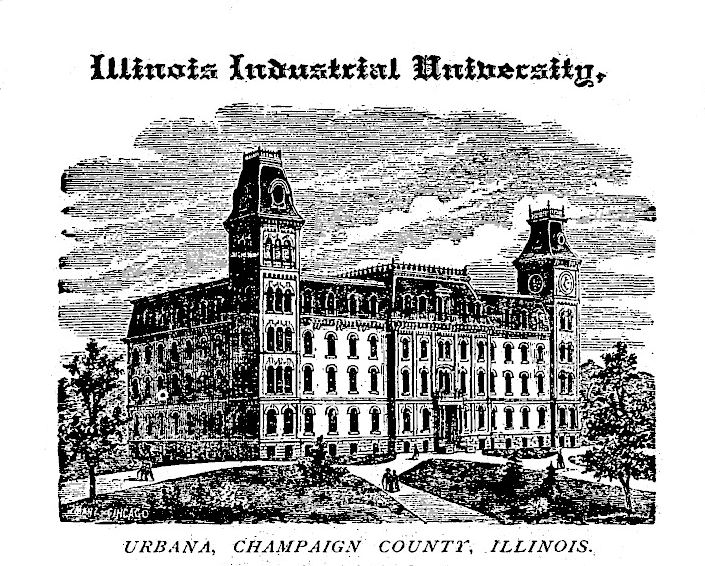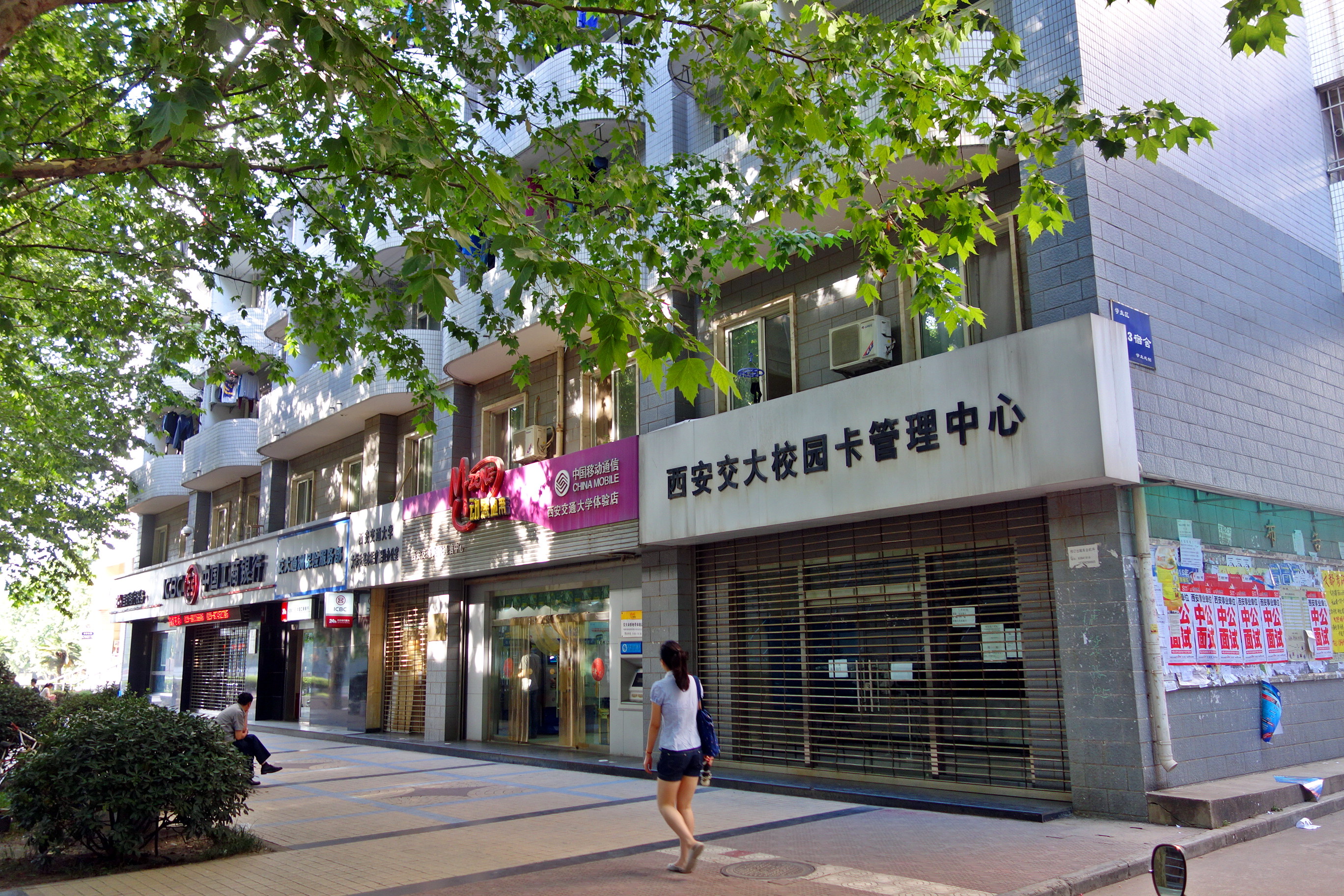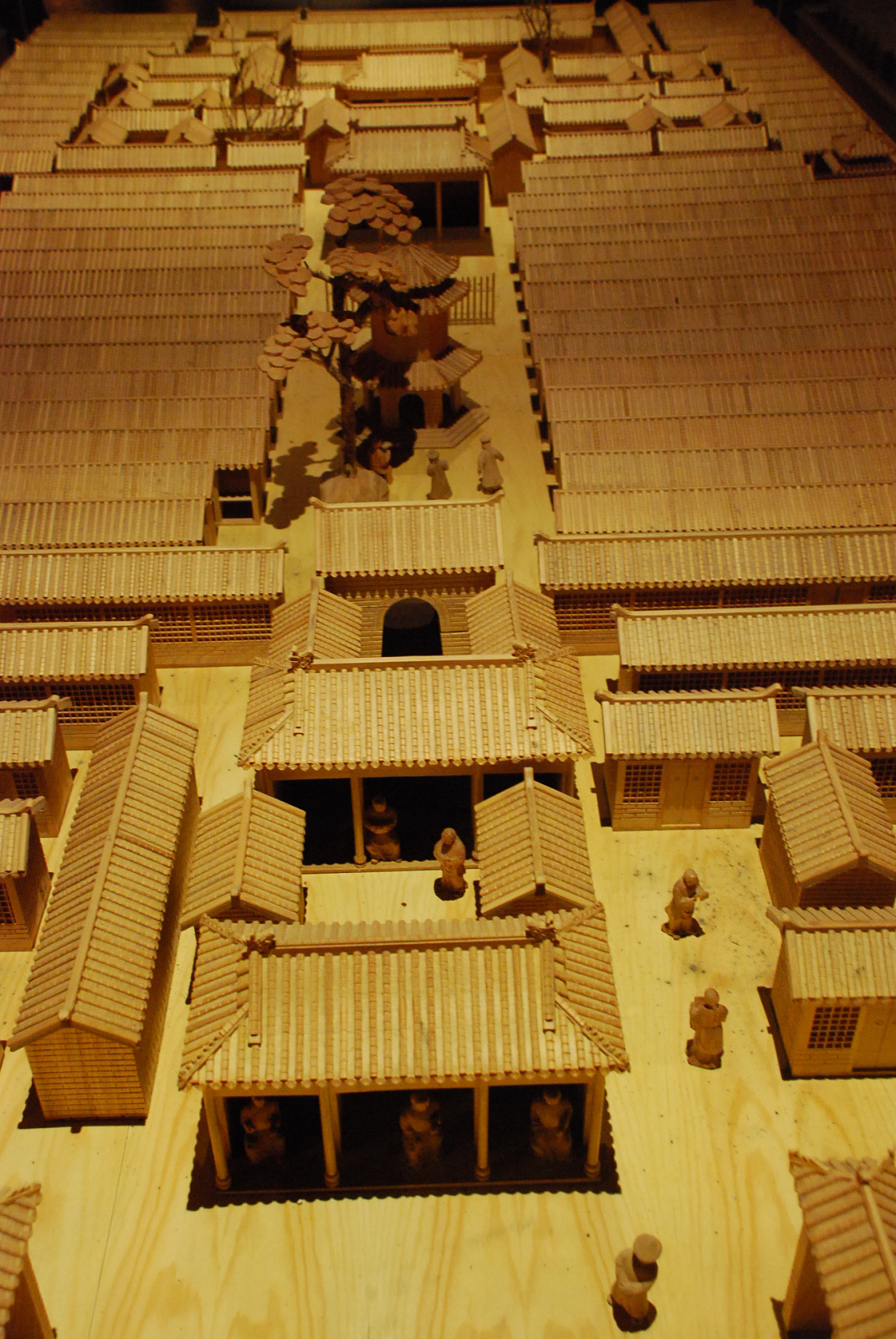|
Sung Shu Chien
Sung Shu Chien (also romanized as Qian Chongshu; ; 11 November 1883 – 28 December 1965) was a Chinese botanist and member of the Chinese Academy of Sciences. Biography Chien was born on 11 November, 1883 to a family of intellectuals in Haining County, Zhejiang Province. In 1904, he was awarded the title of Xiucai in the last imperial examination held by the Qing Dynasty. In 1905, he was admitted to Nan Yang Public School (the antecedent of Xi'an Jiaotong University and Shanghai Jiaotong University). In 1909, he was sent to the Tangshan Road Mining School (now known as Southwest Jiaotong University) to study. In 1910, he entered the preparatory school of Tsinghua University as a publicly-funded student and went to the United States to study in the same year. He first studied agronomy in the College of Science at the University of Illinois. A year later, he transferred to the University of Illinois College of Natural Sciences, majoring in botany, and graduated in July 1914 wit ... [...More Info...] [...Related Items...] OR: [Wikipedia] [Google] [Baidu] |
Qian (surname)
Qian (; Shanghainese: ), also spelt Chin, Chien, Tsien, or Zee in Wu Chinese, is a common Chinese family name. The name literally means "money". Qian is listed at the second place in the Song Dynasty text ''Hundred Family Surnames'', in the line 趙錢孫李 (Zhao (surname) , Zhao, Qian, Sun (surname), Sun, Li (surname 李), Li). As the royal surname of the kingdom of Wuyue, Qian was regarded as second only to Zhao, the imperial surname of the Song. As of 2008, Qian is the 96th most common surname in China, shared by 2.2 million people, with the province with the most people sharing the name being Jiangsu, an area formerly within the Wuyue kingdom. Origins According to the Song dynasty book, ''Tongzhi (encyclopedia), Tongzhi'', the Qian surname is descended from Zhuanxu, one of the legendary Three Sovereigns and Five Emperors, Five Emperors, via Pengzu, the founder of the Peng kingdom in modern-day Jiangsu during the Shang dynasty. A Zhou dynasty official, Fu, was a descendant of ... [...More Info...] [...Related Items...] OR: [Wikipedia] [Google] [Baidu] |
China Agricultural University
China Agricultural University (CAU) is a public university in Haidian, Beijing, China. The university is affiliated with the Ministry of Education of China. It is part of Project 211, Project 985, and the Double First-Class Construction. The university was formed in 1995 through the merger of the Beijing Agricultural University and the Beijing Agricultural Engineering University, which evolved from one of the earliest agriculture institutions in China founded in 1905. As of December 2019, CAU offers 66 undergraduate majors and over 32 masters and 21 doctoral programs. There are around 12,000 undergraduate and 8,900 graduate students. Among them, 508 students are international. Its gymnasium hosted the wrestling events during the 2008 Summer Olympics. History The history of China Agricultural University can be traced back to 1905 when the College of Agriculture was founded in the former Imperial University of Peking. Beijing Agricultural University (BAU) was established in Sep ... [...More Info...] [...Related Items...] OR: [Wikipedia] [Google] [Baidu] |
Sichuan University
Sichuan University (SCU) is a public university in Chengdu, Sichuan, China. The university is affiliated with and funded by the Ministry of Education. The university is part of Project 211, Project 985, and the Double First-Class Construction. In 1994, the then Chengdu University of Science and Technology and then Sichuan University merged to form Sichuan Union University (which was renamed Sichuan University in 1998). In 2000, the then West China University of Medical Sciences and then Sichuan University merged to establish the current form of Sichuan University. History Sichuan University is one of the earliest institutions of higher education in China. Its earliest predecessor was the Sichuan Chinese and Western School (四川中西學堂), a school established in 1896 that combined traditional and modern methods of education. In 1902, it was merged with two traditional Chinese academies, the Jinjiang Shuyuan (錦江書院, founded 1740) and the Zunjing Shuyuan (尊經書 ... [...More Info...] [...Related Items...] OR: [Wikipedia] [Google] [Baidu] |
Xiamen University
Xiamen University (XMU; ) is a public university in Siming, Xiamen, Siming, Xiamen, Fujian, China. It is affiliated with the Ministry of Education of the People's Republic of China, Ministry of Education of China. The university is part of Project 211, Project 985, and the Double First-Class Construction. Founded in 1921 by Tan Kah Kee, a Chinese patriotic expatriate businessman in Singapore, the university has been perennially regarded as one of the top academic institutions in Northern and southern China, Southern China, with strengths in mathematics, chemistry, oceanography, economics, management, law, communication and political science. over 45,000 students are enrolled at Xiamen University, including more than 21,000 undergraduates, over 19,000 master's students, and over 5,000 doctoral candidates. Xiamen University is proactive in international exchanges and collaboration. It has forged partnerships with 263 universities abroad and engages in substantial exchanges wit ... [...More Info...] [...Related Items...] OR: [Wikipedia] [Google] [Baidu] |
Fudan University
Fudan University (FDU) is a public university, national public university in Yangpu, Shanghai, Yangpu, Shanghai, China. It is affiliated with the Ministry of Education (China), Ministry of Education and is co-funded with the Shanghai Municipal People's Government, Shanghai Municipal Government. The university is part of Project 211, Project 985, and the Double First-Class Construction. The university was originally founded by the Chinese Jesuits, Jesuit priest Ma Xiangbo in 1905. It is a member of the C9 League. History 1905–1917: college-preparatory school The university traces its origins to Fudan College, established in 1905 by Chinese Jesuit priest Ma Xiangbo. Prior to founding Fudan, Ma had established Aurora University (Shanghai), Aurora College, where the Society of Jesus frequently opposed and intervened in student movements. This led Ma to create a new institution, Fudan College, as a preparatory school for higher education with government funding, offering th ... [...More Info...] [...Related Items...] OR: [Wikipedia] [Google] [Baidu] |
University Of Illinois
The University of Illinois Urbana-Champaign (UIUC, U of I, Illinois, or University of Illinois) is a public university, public land-grant university, land-grant research university in the Champaign–Urbana metropolitan area, Illinois, United States. Established in 1867, it is the founding campus and Flagship#Colleges and universities in the United States, flagship institution of the University of Illinois System. With over 59,000 students, the University of Illinois is one of the List of United States public university campuses by enrollment, largest public universities by enrollment in the United States. The university contains 16 schools and colleges and offers more than 150 undergraduate and over 100 graduate programs of study. The university holds 651 buildings on and its annual operating budget in 2016 was over $2 billion. The University of Illinois Urbana-Champaign also operates Research Park at the University of Illinois Urbana-Champaign, a research park home to innova ... [...More Info...] [...Related Items...] OR: [Wikipedia] [Google] [Baidu] |
Southwest Jiaotong University
Southwest Jiaotong University (SWJTU; ) is a national public science and engineering university in Chengdu, Sichuan, China. The university is affiliated with the Ministry of Education. It is a national key university co-sponsored by the Ministry of Education, China Railway Corporation, the Sichuan Provincial Government, and the Chengdu Municipal Government. The university is part of Project 211 and the Double First-Class Construction. SWJTU was founded in 1896 and is one of China 's leading engineering universities. Known as the cradle of China's railway engineers, SWJTU is the birthplace of China's modern education in transportation, mining and metallurgy, and civil engineering. Through its history, the university has adopted different names such as “Imperial Chinese Railway College,” “Tangshan Jiaotong University,” and “Tangshan Institute of Railway.” SWJTU is consistently ranked as one of the top universities in China, placing 181-190 in The ''Times Higher ... [...More Info...] [...Related Items...] OR: [Wikipedia] [Google] [Baidu] |
Protein & Cell
''Protein & Cell'' is a monthly peer-reviewed open access journal covering protein and cell biology. It was established in 2010 and is published by Springer Science+Business Media. The editor-in-chief is Zihe Rao (Nankai University). According to the ''Journal Citation Reports'', the journal has a 2018 impact factor of 7.575. Genetic modification of human embryos controversy In 2015, the journal sparked controversy when it published a paper reporting results of an attempt to alter the DNA of non-viable human embryos to correct a mutation that causes beta thalassemia, a lethal heritable disorder. According to the paper's lead author, the paper had previously been rejected by both ''Nature'' and ''Science Science is a systematic discipline that builds and organises knowledge in the form of testable hypotheses and predictions about the universe. Modern science is typically divided into twoor threemajor branches: the natural sciences, which stu ...'' in part because of ethi ... [...More Info...] [...Related Items...] OR: [Wikipedia] [Google] [Baidu] |
Shanghai Jiaotong University
Shanghai Jiao Tong University (SJTU) is a public university in Shanghai, China. It is affiliated with the Ministry of Education of China. The university is part of Project 211, Project 985, and the Double First-Class Construction. It is a member of the C9 League. SJTU was founded as Nanyang Public School in 1896. It was merged into Jiao Tong University in 1921, before gaining its current name in 1959. The university currently has 33 schools, 12 affiliated hospitals, 2 affiliated medical research institutes, 23 directly affiliated units, and 5 directly affiliated enterprises. History Public school to industrial school Nanyang Public School was founded in 1896, making it one of the earliest universities in China. Sheng Xuanhuai requested the Qing government open the school in October. The proposal was approved by the Guangxu Emperor in December, and Sheng became the school's first president. As a member of Westernization Movement, Sheng aimed to weaken the imperial examina ... [...More Info...] [...Related Items...] OR: [Wikipedia] [Google] [Baidu] |
Xi'an Jiaotong University
Xi'an Jiaotong University (XJTU; zh, p=, c=西安交通大学, labels=no) is a public university in Xi'an, Shaanxi, China. It is affiliated with and funded by the Ministry of Education of China. The university is part of Project 211, Project 985, and the Double First-Class Construction. It is a member of the C9 League. XJTU houses five state key laboratories, four state special laboratories, and two state engineering research centers. Two of its eight affiliated teaching hospitals are ranked among China's top 100 hospitals. It is the hub of the University Alliance of the Silk Road, an international academic alliance under the umbrella of China's Belt and Road Initiative that aims to build educational collaboration and fuel economic growth in countries along the Silk Road Economic Belt and key partners worldwide. History In 1896, the Nanyang Public School () was founded in Shanghai based on an imperial edict issued by the Guangxu Emperor, under the Business and Telegrap ... [...More Info...] [...Related Items...] OR: [Wikipedia] [Google] [Baidu] |
Qing Dynasty
The Qing dynasty ( ), officially the Great Qing, was a Manchu-led Dynasties of China, imperial dynasty of China and an early modern empire in East Asia. The last imperial dynasty in Chinese history, the Qing dynasty was preceded by the Ming dynasty and succeeded by the Republic of China (1912–1949), Republic of China. At its height of power, the empire stretched from the Sea of Japan in the east to the Pamir Mountains in the west, and from the Mongolian Plateau in the north to the South China Sea in the south. Originally emerging from the Later Jin (1616–1636), Later Jin dynasty founded in 1616 and proclaimed in Shenyang in 1636, the dynasty seized control of the Ming capital Beijing and North China in 1644, traditionally considered the start of the dynasty's rule. The dynasty lasted until the Xinhai Revolution of October 1911 led to the abdication of the last emperor in February 1912. The multi-ethnic Qing dynasty Legacy of the Qing dynasty, assembled the territoria ... [...More Info...] [...Related Items...] OR: [Wikipedia] [Google] [Baidu] |
Imperial Examination
The imperial examination was a civil service examination system in History of China#Imperial China, Imperial China administered for the purpose of selecting candidates for the Civil service#China, state bureaucracy. The concept of choosing bureaucrats by merit rather than by birth started Imperial examination in Chinese mythology, early in Chinese history, but using written examinations as a tool of selection started in earnest during the Sui dynasty (581–618), then into the Tang dynasty (618–907). The system became dominant during the Song dynasty (960–1279) and lasted for almost a millennium until its abolition during the late Qing reforms, late Qing dynasty reforms in 1905. The key sponsors for abolition were Yuan Shikai, Yin Chang and Zhang Zhidong. Aspects of the imperial examination still exist for entry into the civil service of both China and Taiwan. The exams served to ensure a common knowledge of writing, Chinese classics, and literary style among state officials. ... [...More Info...] [...Related Items...] OR: [Wikipedia] [Google] [Baidu] |








